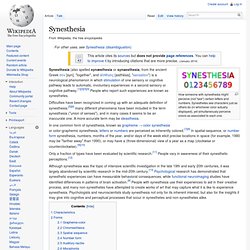

Experience: I feel other people's pain. When I watch a film, I feel as if I'm in starring in it.

The Girl With The Dragon Tattoo was horrific. My friend invited me to see it, and I had no idea what it was about – I normally try to avoid dramas and thrillers. When the character Salander was tortured, I felt as if my body was being beaten; I could physically feel the sensation of being attacked. It's the same with emotions. If someone is happy, it's like hearing an orchestra and I feel extreme excitement and joy.
My earliest memory of mirror-touch is standing in my parents' garden in South Africa, aged six, watching butcher birds hang mice on the wire fence. Eventually, she took me to the doctors, but they didn't have any answers. As the years went on, I struggled to cope with normal life. I went from being a solitary and withdrawn child to a teenager who was too scared to date. It wasn't until I moved to LA to study in 2005 that I finally found the courage to seek help. Back in the UK, I began researching my symptoms. Colour my world. Colour does not exist.

Not out in the world at any rate. All that exists in the world is a smooth continuum of light of different wavelengths. Colour is a construction of our brains. A lot is known about how the brain does this, beginning with complicated circuits in the retina itself. Thanks to a new paper from Greg Field and colleagues we now have an even more detailed picture of how retinal circuits are wired to enable light to be categorized into different colours. Colour discrimination begins with the absorption of light of different wavelengths. Colour information only arises by comparing the responses of multiple cone cells.
The L/M system evolved much more recently, due to a gene duplication that occurred in the lineage of Old World primates, probably around 40 million years ago. All of this raises an important question – how are the inputs to these different cone cells compared? This has been known for quite a long time now. Amazingly, this may extend to humans as well. Synesthesia overview. Synesthesia. How someone with synesthesia might perceive (not "see") certain letters and numbers.

Synesthetes see characters just as others do (in whichever color actually displayed), yet simultaneously perceive colors as associated to each one. Synesthesia (also spelled synæsthesia or synaesthesia, from the ancient Greek σύν [syn], "together", and αἴσθησις [aisthēsis], "sensation") is a neurological phenomenon in which stimulation of one sensory or cognitive pathway leads to automatic, involuntary experiences in a second sensory or cognitive pathway.[1][2][3][4] People who report such experiences are known as synesthetes. Difficulties have been recognized in coming up with an adequate definition of synesthesia:[5][6] many different phenomena have been included in the term synesthesia ("union of senses"), and in many cases it seems to be an inaccurate one.
A more accurate term may be ideasthesia. Characteristics[edit] Forms[edit] Grapheme-color[edit] Chromesthesia[edit] Spatial sequence[edit] History[edit]